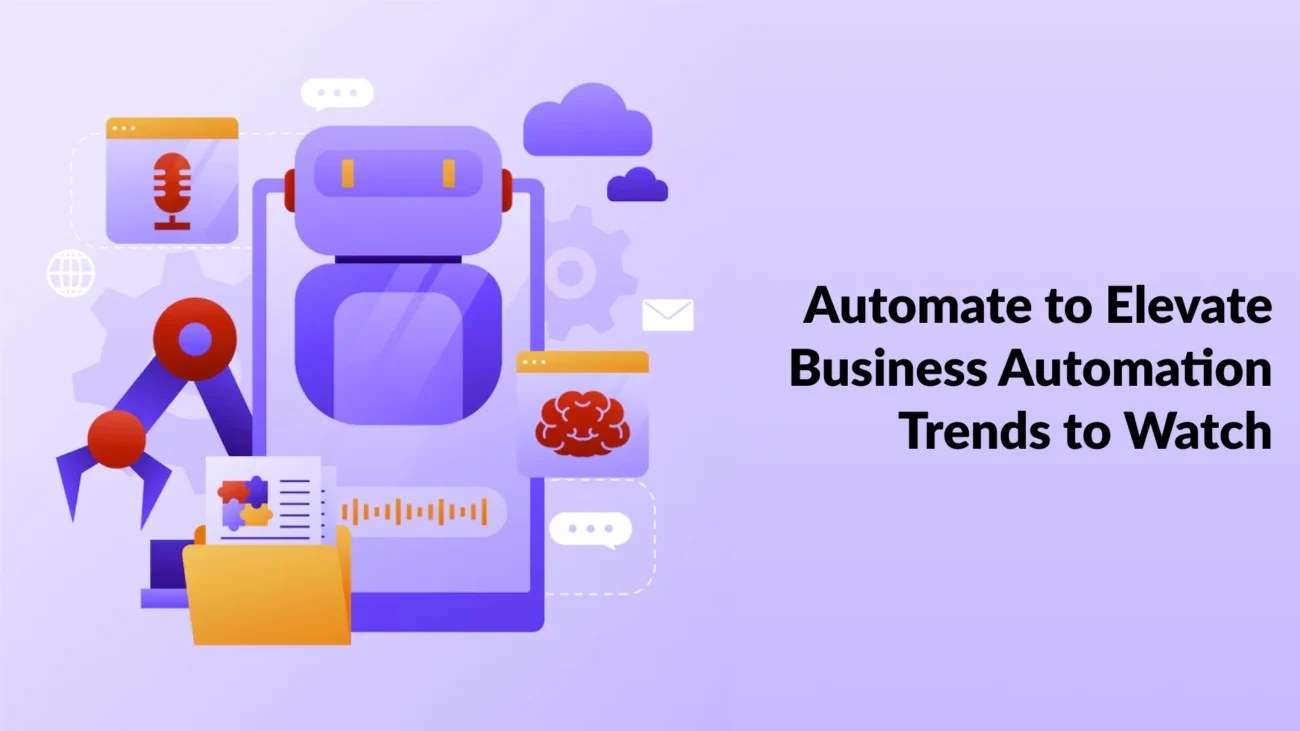In today’s fast-moving digital world, small and medium-sized businesses are under more pressure than ever to do more with less. Whether you’re a startup founder, tech-savvy entrepreneur, or an operations manager in a growing company, staying ahead means leveraging the latest business automation trends. Automation is no longer a luxury — it’s a must for companies aiming to scale efficiently, cut costs, and enhance customer satisfaction.
This guide explores the most impactful business automation trends of 2025 and how they can help elevate your operations. From workflow automation and AI automation tools to robotic process automation (RPA) and smart business tools, we’ll walk you through what matters most for driving business success in the age of digital transformation.
Why Business Automation Matters More Than Ever
Business automation isn’t just about reducing manual tasks — it’s about creating smarter, scalable systems that support long-term growth. The global business environment is more competitive, and small businesses are expected to deliver enterprise-level services on leaner budgets.
By understanding the leading business automation trends, small and medium businesses can:
- Streamline operations
Improve accuracy - Enhance customer experiences
- Free up human resources for higher-value tasks
Automation in business operations is evolving, and companies that stay updated will be best positioned to lead their industries.
1. Workflow Automation: Eliminating Repetition, Maximizing Productivity
Workflow automation tools are making it easier than ever to streamline everyday business tasks. Whether it’s onboarding employees, managing customer inquiries, or processing invoices, automation software can perform these tasks faster and with fewer errors.
Popular platforms like Zapier, Make (formerly Integromat), and Kissflow are designed to connect different applications, creating seamless workflows. These tools help small businesses eliminate repetitive work, reduce human error, and improve productivity without increasing headcount.
2. AI Automation Tools: Smarter, Not Harder
One of the most transformative business automation trends is the rise of AI automation tools. These tools use artificial intelligence to analyze data, predict outcomes, and even make decisions.
For example:
- AI chatbots provide 24/7 customer service.
- AI-powered CRM tools personalize marketing efforts.
- AI tools like ChatGPT help generate content, emails, and reports.
By integrating AI into your business, you can automate complex processes and respond to changes in real-time. This opens new doors not only for efficiency but also for innovation.
3. Robotic Process Automation (RPA): Automation at Scale
Robotic process automation (RPA) takes automation to the next level by using bots to handle high-volume, rule-based tasks across departments. Unlike simple scripts, RPA bots can mimic human actions like logging into systems, extracting data, and processing transactions.
RPA is especially useful in:
- Accounting and finance
- HR onboarding
- Supply chain management
Platforms like UiPath and Automation Anywhere are making RPA accessible to even small businesses. It’s no surprise that RPA is one of the fastest-growing business automation trends for 2025.
4. Digital Transformation: More Than Just a Buzzword
Digital transformation is the backbone of all modern business automation trends. It refers to the integration of digital technology into all areas of a business, fundamentally changing how it operates and delivers value to customers.
With cloud-based solutions, data analytics, and remote collaboration tools, digital transformation empowers businesses to be agile, responsive, and innovative. For small business owners, embracing digital transformation is essential for staying competitive and future-proof.
5. Smart Business Tools: Tech That Works for You
The next wave of business automation trends includes intelligent apps and platforms that adapt to user behavior. These smart business tools can anticipate needs, recommend actions, and simplify decision-making.
Examples include:
- Accounting software like Xero and QuickBooks with built-in automation.
- Smart inventory management systems.
- AI-driven scheduling assistants.
With smart business tools, even the smallest teams can operate like larger enterprises. They bridge the gap between people and processes, empowering teams to work more efficiently.
6. Automation in Business Operations: From Strategy to Execution
One of the biggest misconceptions about automation is that it’s only for tech companies. In reality, automation in business operations can benefit any industry — from retail and hospitality to healthcare and education.
Use cases include:
- Auto-generating reports and analytics
- Automating email sequences
- Streamlining project management
By embedding automation into the core of your business operations, you unlock greater control, predictability, and growth potential. It’s one of the most practical business automation trends that’s here to stay.
7. Business Automation Trends for Small Businesses in 2025
The biggest advantage of today’s technology? Small business technology is more affordable and accessible than ever. You don’t need a massive IT department to implement automation. In fact, most platforms are built with non-tech users in mind.
Top trends to watch:
- Low-code/no-code platforms that allow DIY automation
- AI-driven sales automation
- Mobile-first workflow management
- Automation integrated with remote and hybrid work setups
By leveraging small business technology, entrepreneurs can grow faster, reduce overhead, and maintain a lean team — all without sacrificing quality.
How to Get Started with Business Automation
- Assess your current processes: Identify repetitive, time-consuming tasks across departments.
- Start small: Begin with one process like invoicing, lead follow-up, or social media scheduling.
- Choose the right tools: Use platforms that are scalable, user-friendly, and well-supported.
- Train your team: Change management is key. Make sure your staff understands and supports the transition.
- Measure and optimize: Use built-in analytics to monitor performance and make improvements over time.
Final Thoughts
Business automation trends are more than passing fads — they’re shaping the future of work. For small and medium business owners, the opportunity to elevate operations through workflow automation, AI automation tools, and smart business tools is greater than ever.
By adopting a forward-thinking mindset and investing in the right technology, you’ll position your business not just to survive but to thrive in 2025 and beyond.


